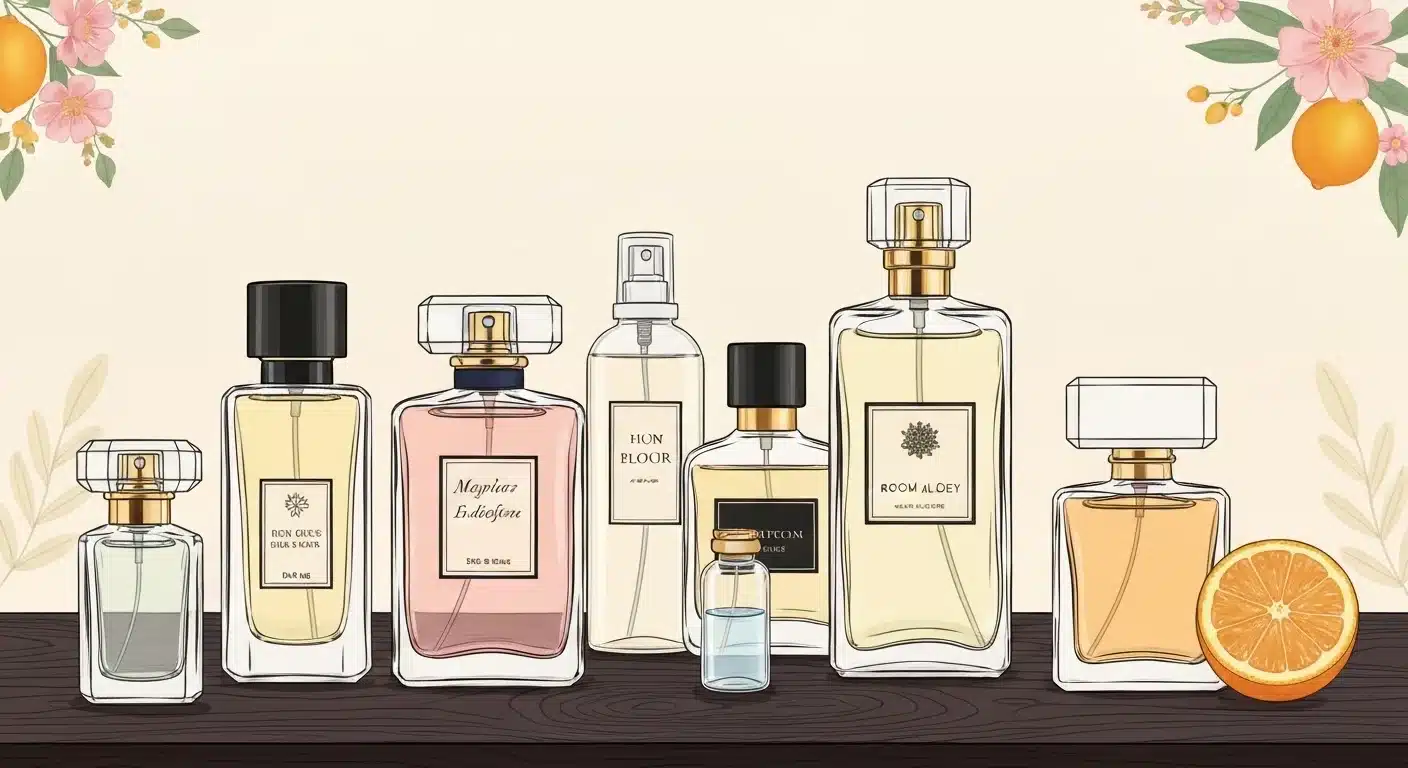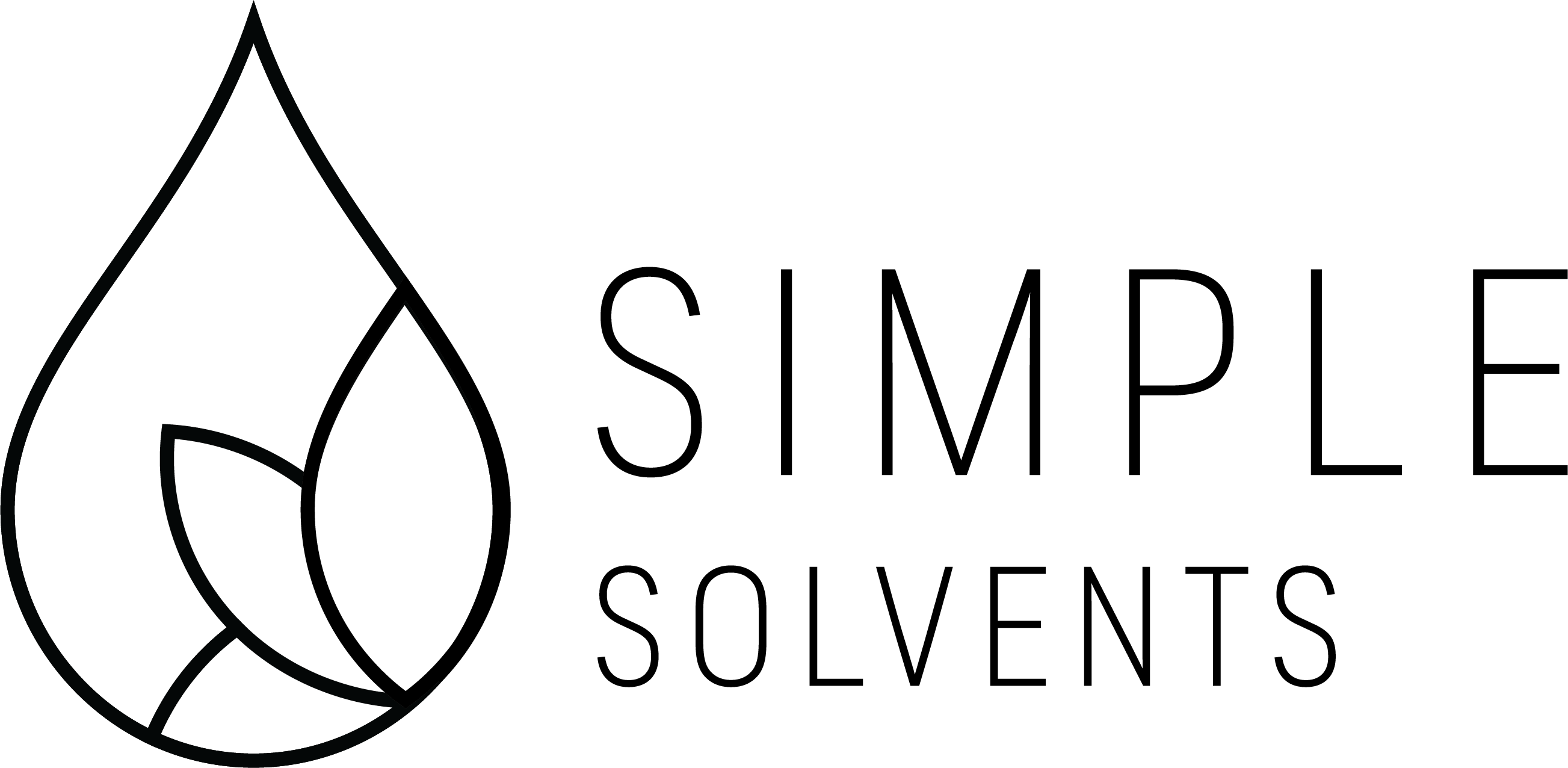Perfumer’s Alcohol: Uses in Perfumes, Colognes & Room Sprays

Perfume and fragrance creation is both an art and a science. Behind every bottle of perfume, cologne, or room spray is a carefully balanced formula that blends aromatic compounds with a carrier base. That carrier is often perfumer’s alcohol, a specially prepared, high purity ethanol designed for fragrance applications.
At Simple Solvents, we supply premium grade SDA 40B ethanol, the trusted choice for perfumers, cosmetic formulators, and fragrance manufacturers. Our products are lab tested and come with Certificates of Analysis (COAs), ensuring consistent quality for your creative process.
Understanding Perfumer’s Alcohol
Perfumer’s alcohol is typically a specially denatured alcohol known as SDA 40B. This is ethanol (ethyl alcohol) blended with small amounts of denaturants (often t-butyl alcohol and denatonium benzoate) to make it unsuitable for drinking but safe and effective for industrial and cosmetic use.
Key features of perfumer’s alcohol include:
- High purity: Available in 95% to 100% ethanol (190 to 200 proof), then proofed to 190 with water before adding denaturants. This ensures consistent evaporation and safety for fragrance use.
- Quick evaporation: Helps fragrances release scent molecules into the air. Simple Solvents also supplies dipropylene glycol (DPG), a complementary solvent that helps fragrances adhere to skin and surfaces longer after the alcohol evaporates
- Non-oily texture: Unlike oils, it doesn’t leave residue on skin or surfaces.
- Safety for skin contact: When formulated correctly, it’s appropriate for perfumes and colognes.
Looking for a reliable source of perfumer’s alcohol? Explore Simple Solvents’ ethanol products.
Why Perfumer’s Alcohol Matters in Fragrance Formulation
Fragrance creators rely on perfumer’s alcohol for three primary reasons: solubility, evaporation, and consistency.
- Solubility of fragrance oils
Essential oils, aroma chemicals, and other fragrance compounds dissolve easily in ethanol, creating a uniform mixture that won’t separate or cloud. - Controlled evaporation
Ethanol evaporates at a moderate rate, lifting the fragrance molecules into the air in stages. This process helps build the scent profile (top, middle, and base notes). - Consistency and clarity
A good perfumer’s alcohol yields a crystal-clear solution, enhancing both the appearance and the professional feel of finished products.
Applications of Perfumer’s Alcohol
1. Perfumes
Perfumes (also called parfums or extraits) contain the highest concentration of fragrance oils, typically 20–40%. Perfumer’s alcohol is the standard solvent that carries these concentrated oils and ensures they project correctly when applied to skin.
Without ethanol, perfumes would be oily, sticky, and less effective in diffusing fragrance. The quick evaporation of perfumer’s alcohol is what creates the characteristic “scent trail” that defines fine fragrances.
2. Colognes
Colognes (eau de cologne) are lighter, with fragrance concentrations between 2–5%. They rely even more heavily on perfumer’s alcohol, since the formula is mostly ethanol with a small amount of aromatic compounds.
For consumers, the refreshing splash of a cologne comes directly from ethanol’s cooling sensation as it evaporates off the skin. For manufacturers, using ethanol for cologne ensures clarity, stability, and compliance with safety standards.
3. Room Sprays & Air Fresheners
Perfumer’s alcohol isn’t limited to personal care products. Many room sprays and linen sprays use ethanol as the carrier solvent. Its fast-drying quality prevents dampness on fabrics and surfaces, while its ability to evenly disperse fragrance oils ensures a pleasant and long lasting scent.
Using ethanol for room sprays also reduces residue compared to oil-based formulations, making it a preferred option for home fragrance brands.
SDA 40B: The Standard for Fragrance Applications
When shopping for perfumer’s alcohol, you’ll often see the designation SDA 40B. This stands for Specially Denatured Alcohol 40B, one of the most common formulas approved by the U.S. Alcohol and Tobacco Tax and Trade Bureau (TTB).
Why SDA 40B?
- Regulatory compliance: Meets U.S. federal requirements for cosmetic and fragrance products.
- Safety: Denaturants render the alcohol non-drinkable, while still being safe for topical application.
- Performance: Maintains ethanol’s desirable solubility and evaporation characteristics.
At Simple Solvents, we supply SDA 40B ethanol specifically formulated for fragrance production. You can order in bulk with confidence, knowing each shipment includes lab-tested verification of purity.
Comparing Ethanol with Other Solvents
While perfumer’s alcohol is the most common choice, some formulators experiment with alternatives:
- Oil-based carriers (like fractionated coconut oil) are sometimes used in roll-on perfumes, but these change the scent experience and don’t evaporate the same way.
- Glycols (such as dipropylene glycol or propylene glycol) are often used alongside ethanol in fragrance formulations. They help anchor scent molecules, extending longevity once the alcohol evaporates, though they can produce a slightly heavier texture if used alone.
- Water based sprays are possible but require solubilizers and preservatives, adding complexity.
For most mainstream perfumes, colognes, and room sprays, ethanol remains the best balance of performance, safety, and aesthetics.
How to Work with Perfumer’s Alcohol
For businesses or DIY formulators, here are best practices when using perfumer’s alcohol:
- Blend gradually: Add fragrance oils to ethanol slowly, stirring to ensure full dissolution.
- Allow aging (maceration): Let blends rest for several days or weeks, improving smoothness and depth.
- Filter for clarity: Before bottling, filter the mixture to remove particulates.
- Use proper storage: Store ethanol and finished products in tightly sealed, dark glass containers to prevent oxidation.
Safety and Handling Considerations
While safe for cosmetic applications, perfumer’s alcohol is classified as a hazmat material, requiring proper facilities for storage, handling, and transport. Follow these safety practices:
- Store in a cool, well-ventilated area.
- Keep away from open flames and sparks.
- Wear gloves and safety goggles during handling.
- Use only food-grade or cosmetic-grade ethanol approved for fragrance applications.
- Ensure labels meet regulatory standards for alcohol-containing cosmetics.
Where to Source Perfumer’s Alcohol
For fragrance manufacturers, sourcing high-quality solvents is just as important as selecting the right oils. Simple Solvents provides lab-tested, COA-backed ethanol products, including SDA 40B perfumer’s alcohol, in bulk volumes.
- Neutral odor: Our SDA 40-B ethanol offers a clean, neutral scent, noticeably smoother compared to competitor products, ensuring no unwanted interference with your fragrance profile.
- Consistent purity ensures clarity and reliable performance.
- Certificates of Analysis guarantee transparency and quality control.
- Nationwide delivery makes it accessible for businesses across the U.S.
Conclusion
Perfumer’s alcohol is more than just a base, it’s the engine that powers perfumes, colognes, and room sprays. As SDA 40B ethanol, it dissolves fragrance oils, controls evaporation, and ensures a professional finish in fragrance products.
At Simple Solvents, we supply premium wholesale perfumer’s alcohol backed by Certificates of Analysis (COAs) and nationwide delivery. Our ethanol solutions are trusted by perfumers, cosmetic formulators, and fragrance manufacturers for their consistency and quality.
Ready to take your fragrance formulations to the next level? Request a Quote today or explore our Wholesale Ethanol Solutions.
